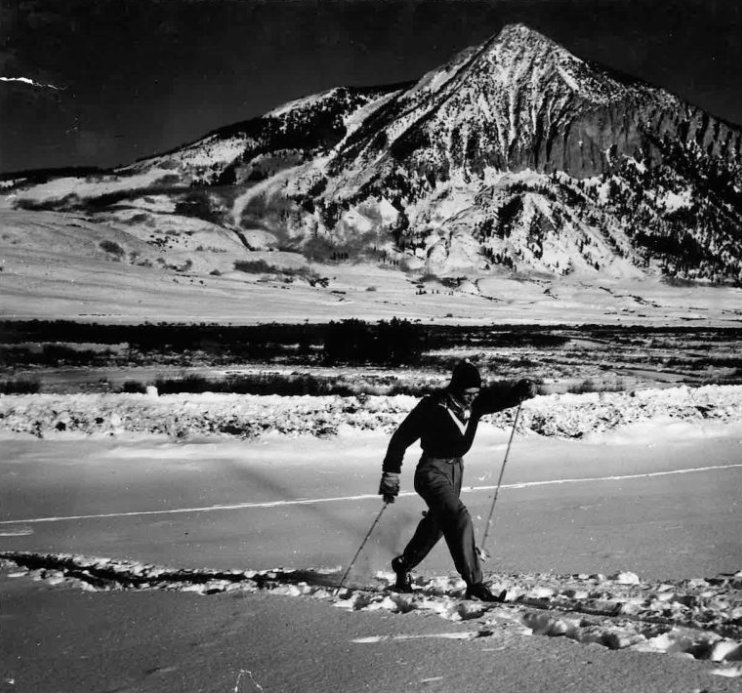We’re excited to share our first edition of the “Ask the PT” series, where Ned Dowling does his best to support our readers in staying healthy and strong to get the most out of the ski season, and beyond. To submit a question, email: askthept@fasterskier.com.
***
Hi Ned,

I have been dealing with bilateral Achilles tendon soreness (midsubstance, several cm proximal to insertion) since an over-zealous hill bounding session in October. When ski season arrived in December, and the soreness persisted, I made the assumption that skate skiing would cause less irritation to the Achilles than classic skiing. However, after recently reading about the importance of plantarflexion force during the push-off phase in skate skiing, I have been reconsidering my assumption. Additionally, my experience over the past month has demonstrated more aggravation from skate skiing than classic skiing, even at low intensity. Does this make sense to you? How would you guide a skier with Achilles tendinopathy regarding selection between skate and classic skiing?
FYI, I am under the treatment of a local PT, working on stretching and eccentric ankle work

Skate skiing is more leg and balance intensive, so it doesn’t surprise me that it’s more irritating than classic. It’s a simple matter of the body being overwhelmed by the load being placed on it. Classic skiing is exhibiting less load on the Achilles, so it doesn’t elicit a pain response. The load with skating exceeds your Achilles’ threshold or comfort level so it starts yelling. Your brain interprets this as pain, which is a pretty good defense mechanism for getting us to stop doing whatever it is that’s being perceived as a threat to our survival.
The follow up question is a matter of load management. Since load is the culprit, we don’t want too much of it. However, it doesn’t need to be avoided altogether. (And from an exercise/rehab perspective, we very much want load, just in the right amount.)

As long as the pain is 4/10 or less and subsides within a couple of hours, you are ok to proceed. This is green light territory. Yellow light is a bit more challenging to navigate. Here in Utah, a yellow light means speed up and a red light really isn’t red for the first 4-5 seconds… but it should mean proceed with caution. So if pain is 5-6/10 or is less but doesn’t subside quickly, I wouldn’t push it any further. You were ok with that activity, but I’d probably want to back it off a little. Pain that exceeds 6/10 is definitely a red light and should be an indication that you need to pack it up and go home. (Admittedly, this guidance becomes much more foggy when the pain presents after, not during, the activity.)
So balancing the volume and intensity of skating would first be a matter of fitting into the stoplight paradigm. But you can also make a lot of your outings into skiathlons: skate until the pain begins to escalate then switch to classic. Or ski most of the time on classic then switch to skate for the last few kilometers. If you’re able to skate for a full session within the green light zone, it is a good idea to have a day or two of relative recovery before your next day of skating. This recovery could be classic skiing, cycling, or strength training, as long as pain levels remain quite low. You just don’t want to be constantly irritating the tendon.

Though not specifically addressed in your query, there is the greater question of what caused the overloading of the tendons in the first place? I know the pain began after a bounding session, but was it an issue of volume or intensity, weakness, compensatory patterning, range of motion deficits, or a culmination of your training up to that point?
In diagnosing musculoskeletal issues, we deal very little in known causation and almost exclusively in correlations. We know that large and sudden increases in training volume tend to cause injury. If the quads or glutes are not doing their share of the work during forward propulsion with bounding or skate skiing, then the gastroc and soleus (and thus Achilles) will have to do more. If ankle joint mobility is restricted, the Achilles might see higher loads. If you recently switched to a running shoe with less heel drop, the Achilles will see more load.
Hopefully, you and your PT have gained some insight into the potential underlying causes. Eccentric exercises are a very valid way to address tendon irritability, but I would highly encourage an exploration of the root cause, if that hasn’t been teased out – or at least hypothesized – already.
Happy skiing,
Ned Dowling, PT

Related Reading: Building a Better Skier Part 3: Single-Limb Stability
Author’s Disclaimer: The advice given in this article is the sole opinion of the author except where other media is cited. FasterSkier and the author’s employer (University of Utah) should not be considered accountable. As with any medical advice acquired on the internet, information presented in this article should not take the place of proper examination and treatment from a licensed Physical Therapist or Physician. If symptoms are severe or worsening, please do yourself a favor and seek appropriate medical attention.
Ned Dowling
Ned lives in Salt Lake City, UT where his motto has become, “Came for the powder skiing, stayed for the Nordic.” He is a Physical Therapist at the University of Utah and a member of the US Ski Team medical pool. He can be contacted at ned.dowling@hsc.utah.edu.



